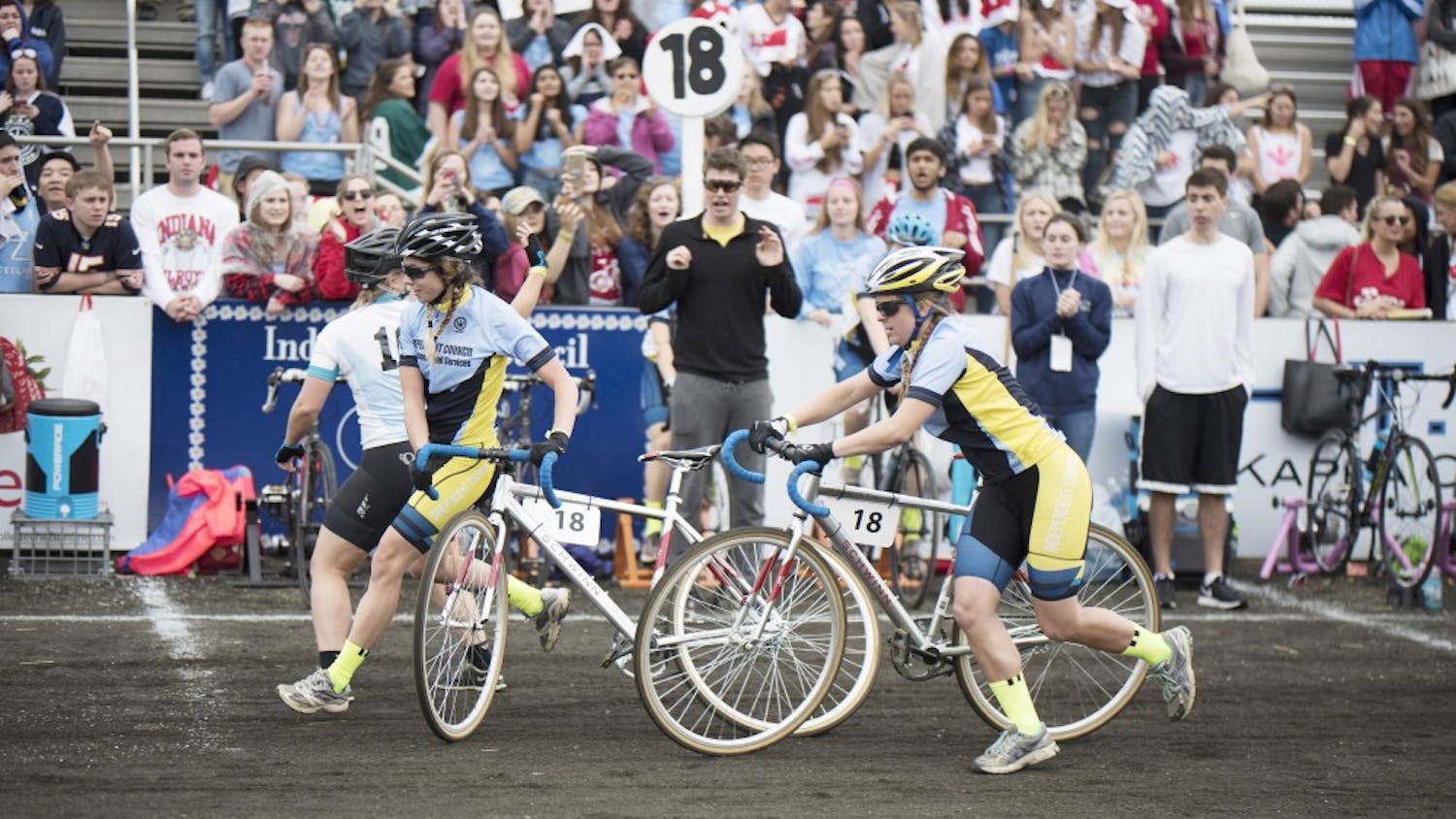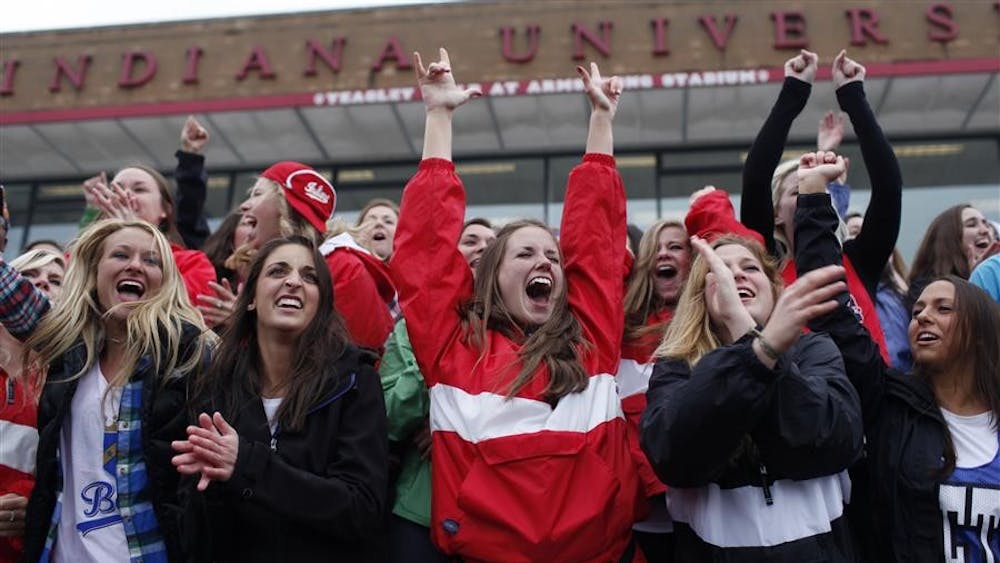It’s 8 p.m. March 26, in a crowded Ballantine Hall classroom, and Laura Bliss and her RideOn teammates are ready to choose their race-day jerseys — their identity — for the Little 500.
They qualified 17th, so they get the 17th pick of jerseys. The solid-colored jerseys are long gone, and the second-year team with the black-and-blue shorts is running out of choices for jerseys. When the opportunity to stand out in the field comes around, they pounced on it.
“Our strategy this year was more to clash, more to make us stand out more,” Bliss said. “It’s baby blue and hot pink, so it’s going to look like a baby shower exploded or something.”
Sixty-six teams change their identities each year at this chaotic meeting, and everybody attends — or else they are docked a two-second penalty. The meeting has been happening for years, but the story of Little 500 race-day jerseys goes much further back.
When the race began in the 1950s — more than three decades before the women’s race was created — the jerseys for participating fraternities were hand-stitched by members of sororities, known as Little Five sweethearts. The jersey creation was the only role women played in the race until the genesis of the women’s race 25 years ago.
In the 1990s, a local oversupply of fabric provided a huge change in the way jerseys were supplied on race day.
Two local women who owned a seamstress shop took whatever extra fabric they could find and threw it together to make race jerseys. Former Little 500 Race Director Pam Loebig said the jerseys would never cease to surprise once they arrived.
“It could be any color combination,” Loebig said. “The Student Foundation would have no idea what colors were showing up, except they always made sure there was a white, yellow and green. Other than that, it was kind of a grab bag.”
The white, yellow and green jerseys still remain as the top-tier jerseys come race day, and solid jerseys are almost always the first to go.
These hodge-podge jerseys were much appreciated but didn’t make great race jerseys, Loebig said. They didn’t breathe as well as professionally made jerseys and resulted in a lot of hot, sweaty riders.
Finally, in 2009, Loebig’s first year as race director, the ,IU Student Foundation enlisted the services of Canari Cyclewear to provide the riders with high-quality and professional jerseys to wear on race day.
Some aspects of the jersey selection never change, though. Fiji still tries to choose purple because it’s the house color. Delta Gamma still tries to grab something black.
And the teams and fans alike still plan part of their race-day experience on what happens the night of the jersey-selection meeting.
“I know a bunch of teams make shirts for the fans that go along with the jerseys for the race, so that’s the day when your identity basically is born,” Bliss said.
Race-day jerseys more than just fabric
Get stories like this in your inbox
Subscribe





